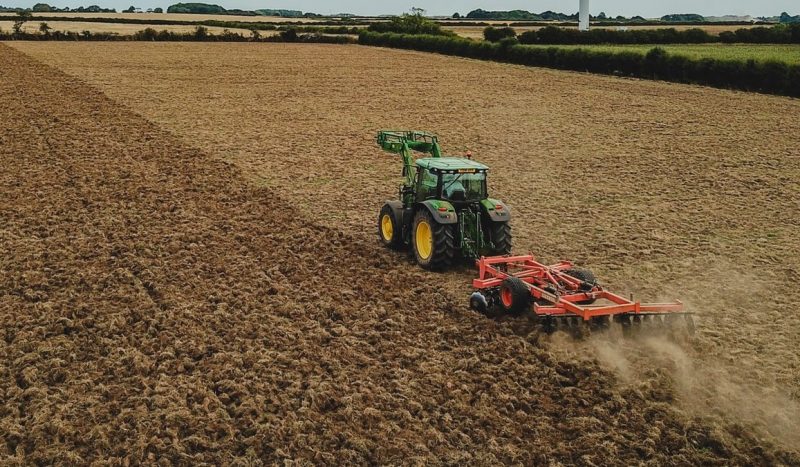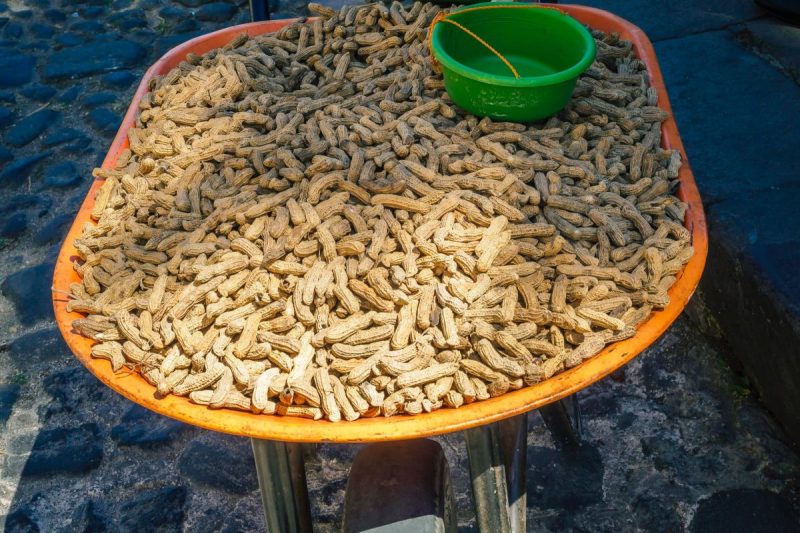Peanuts, information about crop management
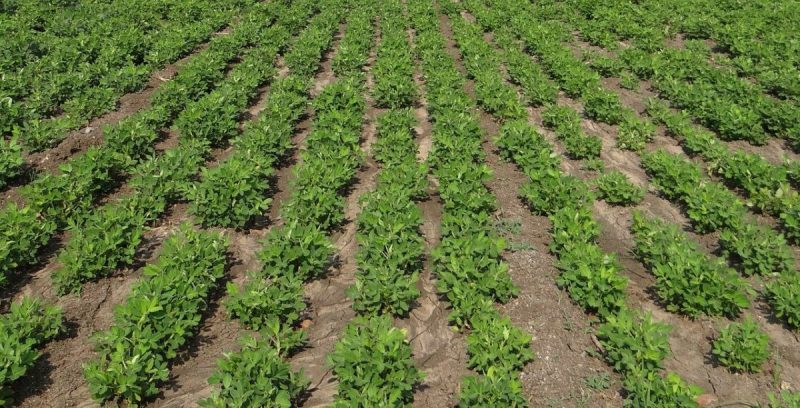
The peanut is part of the Hedysareae tribe, genus Arachis, and the cultivated species, Arachis hypogaea, includes two subspecies: ssp. fastigiata and ssp. procumbens. Peanuts are native to the tropical and subtropical areas of South America and are widespread in areas with a warm climate. Peanut oil is used in food, in the canning and margarine industry, and the depreciated oil is used in soaps. After oil extraction, the seeds are used to prepare halva, chocolate, etc., and the whole seeds are eaten roasted or in various dishes.
BOTANICAL CHARACTERISTICS
Peanuts are annual plants with a type II taproot, an erect or lying stem, and paripinnate leaves with 2 pairs of leaflets.
Peanut flowers are small, yellow or orange, solitary or grouped by 2-4 in inflorescences, and appear 25-30 days after sprouting. The plant has two types of flowers, some that open with a visible corolla for pollination and some that do not open, being arranged at the base of the stem.
The fruit is an indehiscent pod, with 1-5 seeds (represents 65-75% of the fruit mass), and is formed in the soil, being covered by an ectotrophic mycorrhiza, which protects it from drying out.
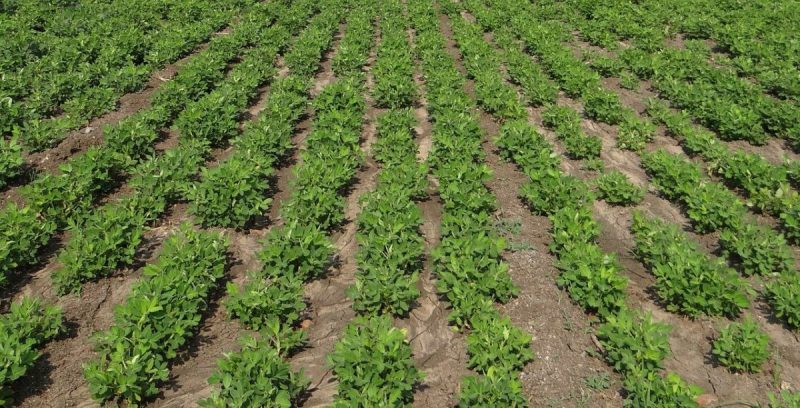
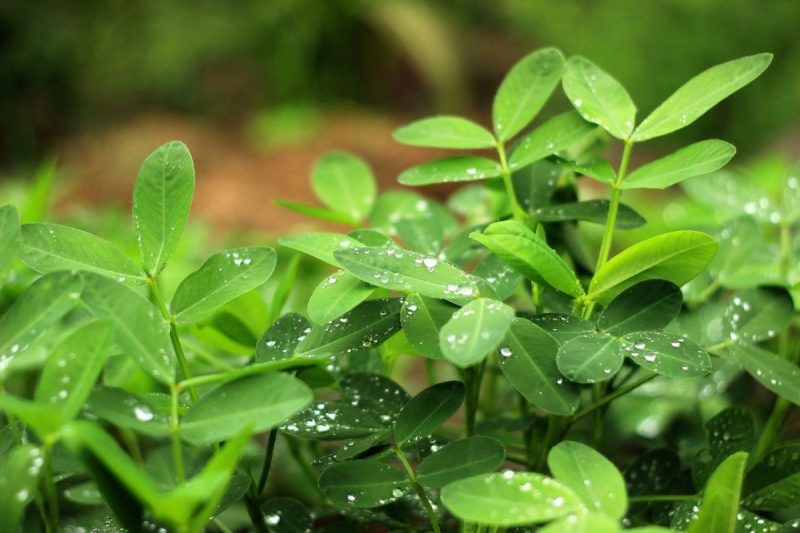
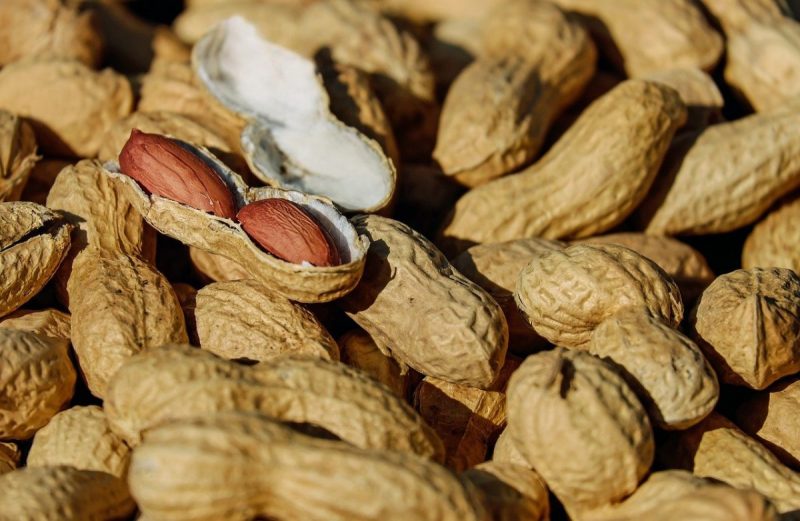
CLIMATE AND SOIL REQUIREMENTS
Temperature
Peanut plants have high-temperature requirements. Thus, the minimum germination temperature in the soil is 12-13 °C, they bloom at 20 °C, and during the vegetative growth period, they can withstand temperatures of 35-40 °C. At an average daily temperature of 12°C the accumulation of substances in the grain stops. The sum of the temperature degrees during the growing season (120 days for extra-early varieties and 200 days for late varieties) is 3000-4000°C or more.
Humidity
Until flowering, the humidity requirements are higher. Thus, in the first three months of vegetative growth, it is necessary to have 250 mm of precipitation. Heavy rains reduce the thermal regime, reduce production, and delay peanut ripening.
Soil
Requires light or even sandy soils that allow fruit to develop, with a neutral to alkaline reaction (pH 6.5-7.5).
CULTIVATION TECHNOLOGY
Crop rotation
Peanuts are good precursors for spring crops (cereals) and can be grown after any plant. It can return to a field after 2-3 years.
Fertilizing
It can be done with well-decomposed manure or with specific fertilizers, the dosages being established after agrochemical soil analysis..
Recommended products
-
You can find products on a different store
Change Store -
You can find products on a different store
Change Store -
You can find products on a different store
Change Store -
You can find products on a different store
Change Store -
You can find products on a different store
Change Store -
You can find products on a different store
Change Store -
You can find products on a different store
Change Store -
You can find products on a different store
Change Store -
You can find products on a different store
Change Store -
You can find products on a different store
Change Store -
You can find products on a different store
Change Store -
You can find products on a different store
Change Store -
You can find products on a different store
Change Store -
You can find products on a different store
Change Store -
You can find products on a different store
Change Store -
You can find products on a different store
Change Store -
You can find products on a different store
Change Store -
You can find products on a different store
Change Store -
You can find products on a different store
Change Store -
You can find products on a different store
Change Store -
You can find products on a different store
Change Store -
You can find products on a different store
Change Store -
You can find products on a different store
Change Store -
You can find products on a different store
Change Store
Soil works
In autumn you can carry out a deep ploughing, and the seedbed preparation in spring can be done as for the other plants that will follow later. The last tillage must be no deeper than 8-10 cm so that the gynophores do not penetrate too deeply, which would delay ripening and reduce the number of fruits formed.
Seeds and sowing
Sowing is done when the soil temperature reaches 14-15°C. The optimal density is 8-12 plants/ m2 and the distance between rows is 50-60 cm and 16-20 cm per row. Sowing should be done at a depth of 5-6 cm. The amount of seed per hectare varies, being 35-50 kg/ha for small seeds, 60-70 kg/ha for large seeds, and 100-120 kg/ha for pods.
Recommended products
-
You can find products on a different store
Change Store -
You can find products on a different store
Change Store -
You can find products on a different store
Change Store -
You can find products on a different store
Change Store -
You can find products on a different store
Change Store -
You can find products on a different store
Change Store -
You can find products on a different store
Change Store -
You can find products on a different store
Change Store -
You can find products on a different store
Change Store -
You can find products on a different store
Change Store -
You can find products on a different store
Change Store -
You can find products on a different store
Change Store -
You can find products on a different store
Change Store -
You can find products on a different store
Change Store -
You can find products on a different store
Change Store -
You can find products on a different store
Change Store -
You can find products on a different store
Change Store -
You can find products on a different store
Change Store -
You can find products on a different store
Change Store -
You can find products on a different store
Change Store -
You can find products on a different store
Change Store -
You can find products on a different store
Change Store -
You can find products on a different store
Change Store -
You can find products on a different store
Change Store
CARE WORKS
Normally, 3-4 hoeings should be carried out when thinning the crop and another 2-3 hoeings should be carried out, to favor gynophorus penetration. Chemical weed control involves herbicide application. Irrigation will be carried out according to the plants’ needs and the crop area.
HARVESTING
Peanuts are harvested at maturity, before frost falls, by hand pulling, with a hoe, or by methods used for harvesting potatoes. After harvesting, the fruits are dried and separated, through specific procedures. In countries where peanuts are cultivated extensively, special harvesters are used.
















































































































































































































































































































































































































































